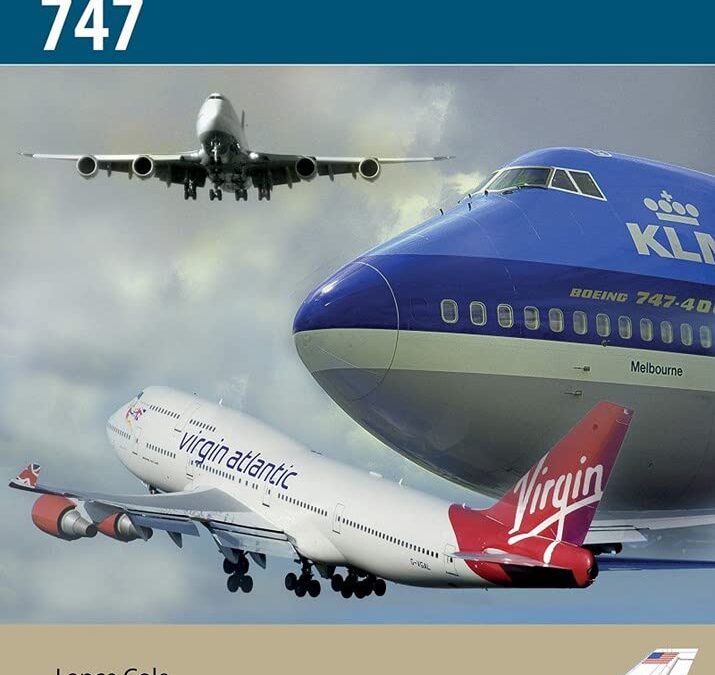
Boeing’s 747 ‘heavy’ has achieved a fifty-year reign of the airways, but now airlines are retiring their fleets as a different type of long-haul airliner emerges. Yet the ultimate development of the 747, the -800 model, will ply the airways for many years to come.
Even as twin-engine airliners increasingly dominate long-haul operations and the story of the four-engine Airbus A380 slows, the world is still a different place thanks to the great gamble that Boeing took with its 747. From early, difficult days designing and proving the world’s biggest-ever airliner, the 747 has grown into a 400-ton leviathan capable of encircling the world. Boeing took a massive billion-dollar gamble and won.
Taking its maiden flight in February 1969, designing and building the 747 was a huge challenge and involved new fields of aerospace technology. Multiple fail-safe systems were designed, and problems developing the engines put the whole programme at risk. Yet the issues were solved and the 747 flew like a dream said pilots – belying its size and sheer scale.
With its distinctive hump and an extended upper-deck allied to airframe, avionics and engine developments, 747 became both a blue-riband airliner and, a mass-economy class travel device. Fitted with ultra-efficient Rolls-Royce engines, 747s became long-haul champions all over the world, notably on Pacific routes. across the Atlantic in January 1970, 747 became the must-have, four-engine, long haul airframe. Japan Airlines, for example, operated over sixty 747s in the world’s biggest 747 fleet.
By the renowned aviation author Lance Cole, this book provides a detailed yet engaging commentary on the design engineering and operating life and times of civil aviation’s greatest sub-sonic achievement.

More and more people are hitting the road to the middle of nowhere. Along less-traveled paths they are heading up mountains and down dunes in converted mobile homes, campers, trucks, or vans. They are enjoying the drive and the view through mud-splattered windshields as much as the stops and evening campfires amid stunning terrain. Although many of us love living in cities, we have a growing longing to escape into nature. The outdoor scene is booming and many people are heading off to discover it with their own converted vehicles. This way, they can determine their own routes, itineraries, and pace, as well as how many challenges they’d like to meet along the way. After a day on the go, these multifunctional vehicles also serve as kitchens, campgrounds, and sleeping quarters that offer a great deal more improvised fun than a standard, perfectly equipped RV. Conventional luxuries are eschewed for the sake of greater freedom, tranquility, and adventure. Off the Road captures the special mood of such trips by solo travelers, couples, or families who are seeking an alternative to a more standard vacation or want to live their lives differently ―at least for a while. On the one hand, the book shows how familiar models, such as VW buses, Land Rovers, jeeps, and Toyotas are being rediscovered and repurposed for these exploits. On the other, it presents automotive dreams turned into customized, homey vehicles that offer tailgate breakfasts or roof beds to better admire the stars and that can, in an emergency, cross a river or drag a fallen tree from the road. Whether exploring the desert, showing children the world, or navigating polar landscapes, the journeys collected in Off the Road are as unique as the people who take them. From radical escapists to fans of nature looking for their next trip, the book celebrates the joy of being on the go on four wheels.

Inspiration and expert advice for planning and driving road trips around the world – including 50 suggested routes
Road Trip: A Practical Manual is aimed at inspiring readers to take a road trip, while providing practical advice to help them to do so. Whether looking at popping over to Europe for a quick circuit, hankering to drive the classic routes of North America, or even aiming to cover a clutch of African countries, there is something for everyone. Importantly, every road trip featured is possible without specialist equipment and, indeed, each and every trip could possibly be completed in a hire car – though for a select few a four-wheel drive hire vehicle would be advisable.
The author offers a wealth of advice from his experience taking road trips around the world. From hiring cars and paperwork, to what to take, driving laws, crossing borders and emergencies, the engaging text aims to give the reader confidence to fulfill his/her dreams.
The second part of the book provides a wide range of route suggestions, based on the author’s own experiences on six continents. Road Trip: A Practical Manual is a fascinating guide, which will, hopefully, inspire readers to turn their independent travel dreams into reality.





